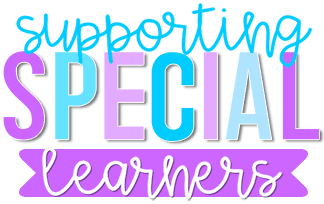As an educator in special education, let’s face it, one size fits all doesn’t cut it. Traditional teaching methods may only work for some students in the classroom. Adapted books serve as a transformative resource, especially for students with special needs. They are special versions of regular books, changed to help students learn in their own way. Adapted books are available in both print and digital versions to cater to different learning needs. They allow for learning to be accessible and engaging for all. Whether you’re an educator, parent, or simply passionate about inclusive learning, this guide is for you!
Why Adapted Books Are Important
Have you ever wished there was a better way to help all students learn? Adapted books can help! They are changed to offer extra support for students who learn in unique ways. These changes might include:
- Simpler words
- Bigger text
- Braille
- Pictures or objects you can move
- Visual supports to help students practice spatial concepts

How Adapted Books Help
Adapted books help students with special needs in many ways:
- Engaging: Interactive pieces that students connect with make learning more enjoyable.
- Different Learning Styles: Adapted books work for students who learn by seeing, hearing, or touching.
- Better Understanding: Breaking down big ideas and using pictures helps students understand.
- Beneficial for Early Readers and Special Education Students: Interactive adapted books and interactive books are particularly beneficial for early readers and special education students, helping them engage with language development, literacy improvement, and various academic subjects.
Studies have shown that students with autism made significant improvements in reading when they used adapted books!
How to Make Adapted Books
Making adapted books takes creativity, planning, and a few key supplies. Here’s a simple guide:
- Pick a Book: Choose a book that matches your student’s interests and learning goals.
- Decide on Changes: Think about simple text, pictures, things to touch, or sound.
- Get Your Supplies: Grab construction paper, Velcro, pictures, or other items. You’ll likely need a printer, laminator, and binding supplies.
- Build Your Book: Add your changes to the original book. Remember, the first few may take some time, but it gets easier with practice!
- Watch This Helpful Video:
Explore a Variety of Adapted Books
Here are some of adapted books we offer to support your students:
- Decodable Readers Adapted Books: Early Reader – 10 Interactive Books:
- Perfect for building early reading skills and confidence.
- Alphabet Adapted Books, Sensory Bin Sorting Mats and Posters:
- Make learning the alphabet fun with hands-on activities!
- 2D Shapes Adapted Books – Special Education and Kindergarten:
- Help students master shape recognition with engaging visuals.
- Adapted Books Alphabet, Shapes and Color – Special Education (Bundle):
- Get everything you need for foundational skills in one convenient bundle.
As a special education teacher, I created these adapted books to address the unique needs of our students, make learning more accessible, and help them achieve their specific IEP goals.
Using Adapted Books in Special Education Classroom
Here’s how to get the most out of adapted books in your special education classroom:
- Reading Time: Let students explore adapted books on their own or in small groups.
- Lesson Plans: Make adapted books part of your lessons.
- Lots of Choices: Have different adapted books to keep students interested.
- Engagement: Adapted books help keep students learning and engaged.
Find Adapted Books with Supporting Special Learners
Adapted books have the power to change how students with special needs learn. They help students reach their full potential! Find teacher-created, classroom-tested adapted books to boost color recognition, alphabet skills, and more at Supporting Special Learners. Visit our shop today!
FAQs About Adapted Books
- What is the purpose of adapted books?
- Adapted books make learning more accessible for students with different learning needs.
- What does it mean when a book is adapted?
- An adapted book is altered in some way to help students with different learning needs. Changes could be bigger words, pictures, or things students can touch.
- How do you adapt a book for special needs?
- Adapting a book involves:
- Picking a book that matches a student’s interests and goals.
- Deciding on changes they need (simpler words, pictures, etc.).
- Making the changes to an original book.
- What is an adapted text for students with disabilities?
- Adapted text is changed to make it easier to read and understand. This includes adapted books, easier worksheets, bigger words, or more pictures.


